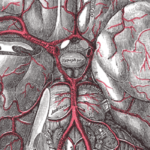1. The Canadian Syncope Risk Score was superior when compared to the Osservatorio Epidemiologico della Sincope nel Lazio (OESIL) score in identifying patients at low risk for serious outcomes.
2. The clinical utility of the Canadian Syncope Risk Score (CSRS) still remains uncertain given the influence of clinician classification of syncope at ED discharge affecting the performance of the CSRS.
Evidence Rating Level: 3 (Average)
Study Rundown: The Canadian Syncope Risk Score (CSRS) was developed to predict a composite of serious clinical plus procedural events at 30 days not evident during ED evaluation. Initial national validation showed high prognostic accuracy, and thus the CSRS was introduced as a decision tool after completed ED assessment, with the primary aim to help identify patients at low risk for 30-day serious outcomes in whom hospitalization, which is associated with low diagnostic yield and higher costs, can be avoided. However, there is a gap in knowledge as to the performance and clinical utility of the CSRS in patients with syncope presenting to the ED in countries outside of Canada. This study demonstrated that based on an international external validation, the CSRS showed good performance in identifying patients at low risk for serious outcomes and was superior to the OSEIL score, another validated score. This study was limited by being unable to disentangle the influence of other CSRS components on clinician classification of syncope at ED discharge. Nevertheless, these study’s findings are significant, as they demonstrate the international validation of the CSRS, despite still needing to better discern the clinical utility of the CSRS.
Click to read the study in AIM
Relevant Reading: Does N-Terminal Pro–B-Type Natriuretic Peptide Improve the Risk Stratification of Emergency Department Patients With Syncope?
In-Depth [prospective cohort study]: This prospective cohort study examined 2283 patients from EDs in 8 countries on 3 continents, including the US, Switzerland, Spain, Germany, Italy, Poland, New Zealand, and Australia. Patients who were 40 years or older and presented to the ED with syncope within the past 12 hours were eligible for the study. Patients who had a non-syncopal loss of consciousness such as a fall or stroke, or had an adverse event or indication for a procedural intervention identified during the ED evaluation were excluded from the study. The primary outcome measured was 2 composites summarizing 30-day serious outcomes not evident in the ED. A composite measure of serious clinical and procedural outcomes, including death, life-threatening arrhythmia, myocardial infarction, and other serious outcomes were included to address the possibility of a causal chain between hospitalization and procedural intervention for the treatment of syncope. Outcomes in the primary analysis were assessed via Cox regression models and Kaplan-Meier curves to examine the incidence of composite outcomes overtimes. Based on the primary analysis, the prognostic performance of the CSRS was good for both 30-day composite outcomes and better compared with the OESIL score (area under the receiver-operating characteristic curve [AUC], 0.85; 95% Confidence Interval {CI}, 0.83 to 0.88) vs 0.69 (95% CI, 0.64 to 0.75). Additionally, the safety of triage was higher using the CSFS versus the OESIL score (0.6% vs 1.5%). However, a simplified model including only clinician classification of syncope (a component of the CSRS) achieved similar discrimination as the CSRS (AUC, 0.83; 95% CI, 0.8 to 0.87) for the primary composite outcome. Overall, this study demonstrates that the CSRS performed well on international validation in identifying patients at low risk for serious outcomes outside of Canada, but clinician classification of syncope at ED discharge seems to explain much of the performance of the CSRS in this study, and thus, the clinical utility of the CSRS is still uncertain.
Image: PD
©2022 2 Minute Medicine, Inc. All rights reserved. No works may be reproduced without expressed written consent from 2 Minute Medicine, Inc. Inquire about licensing here. No article should be construed as medical advice and is not intended as such by the authors or by 2 Minute Medicine, Inc.


